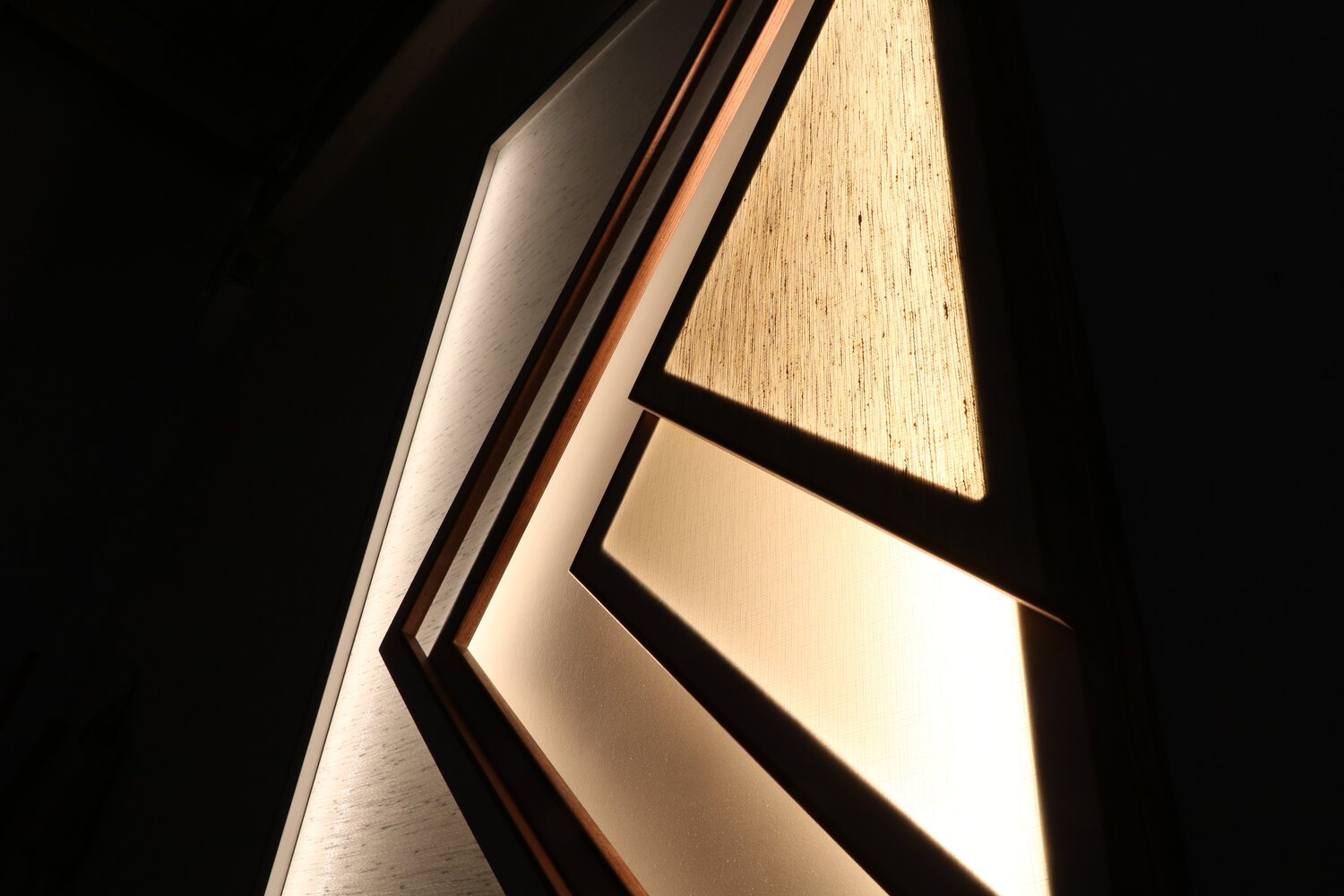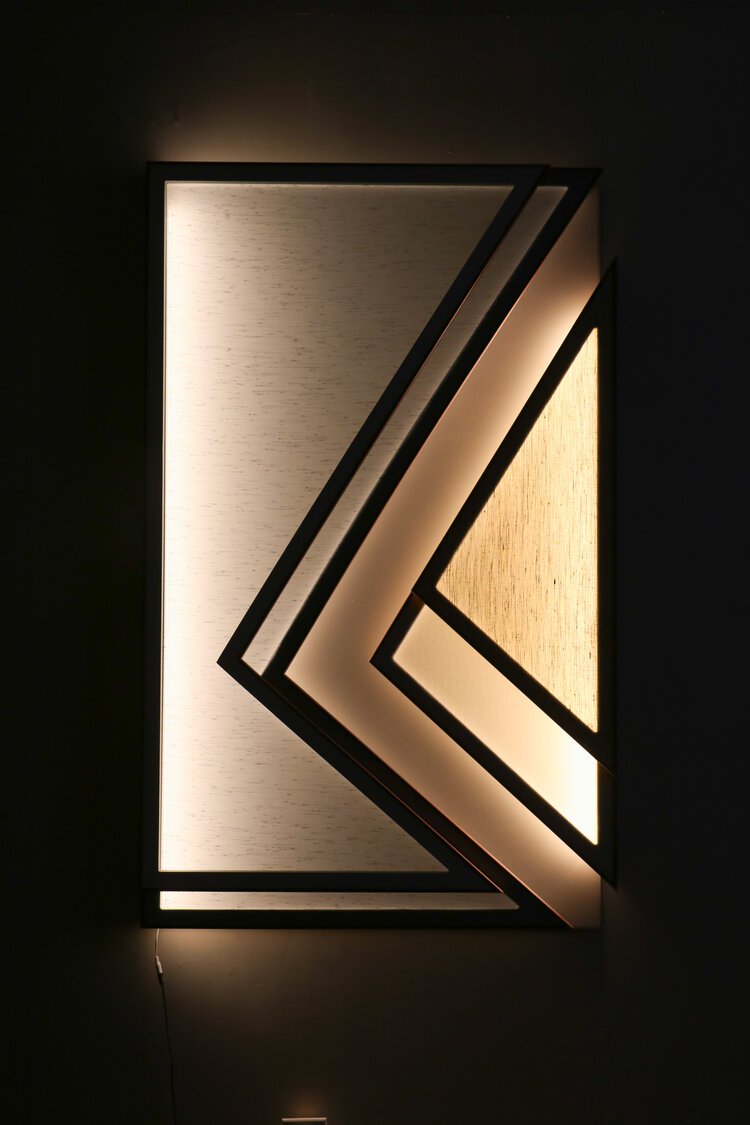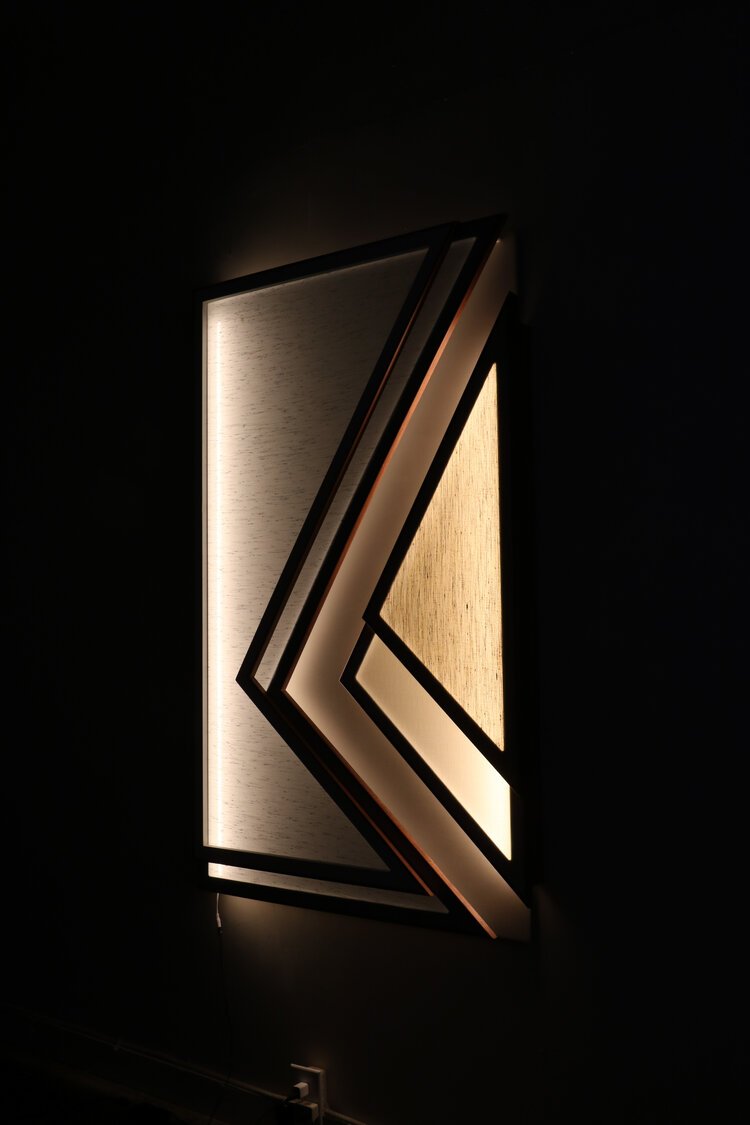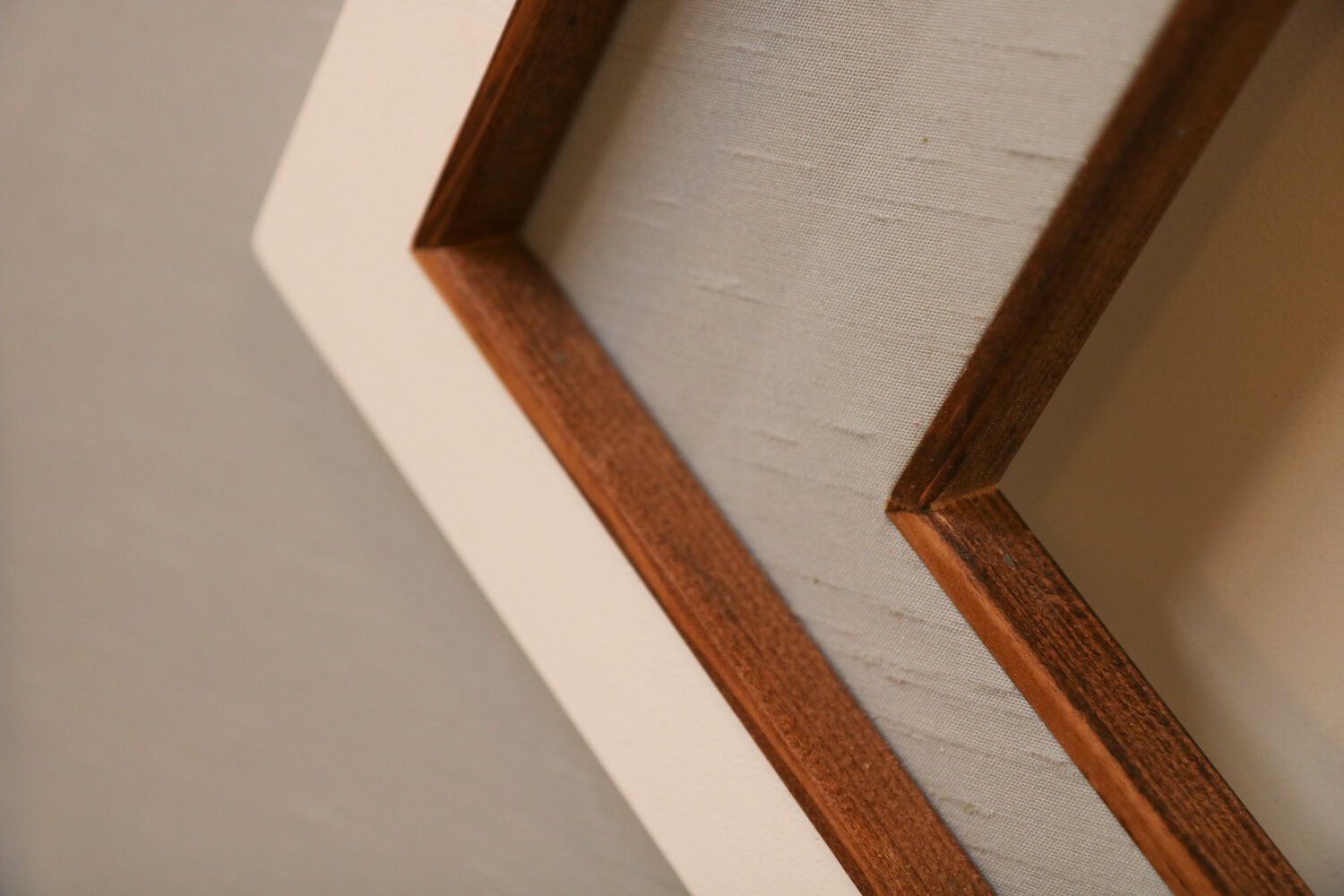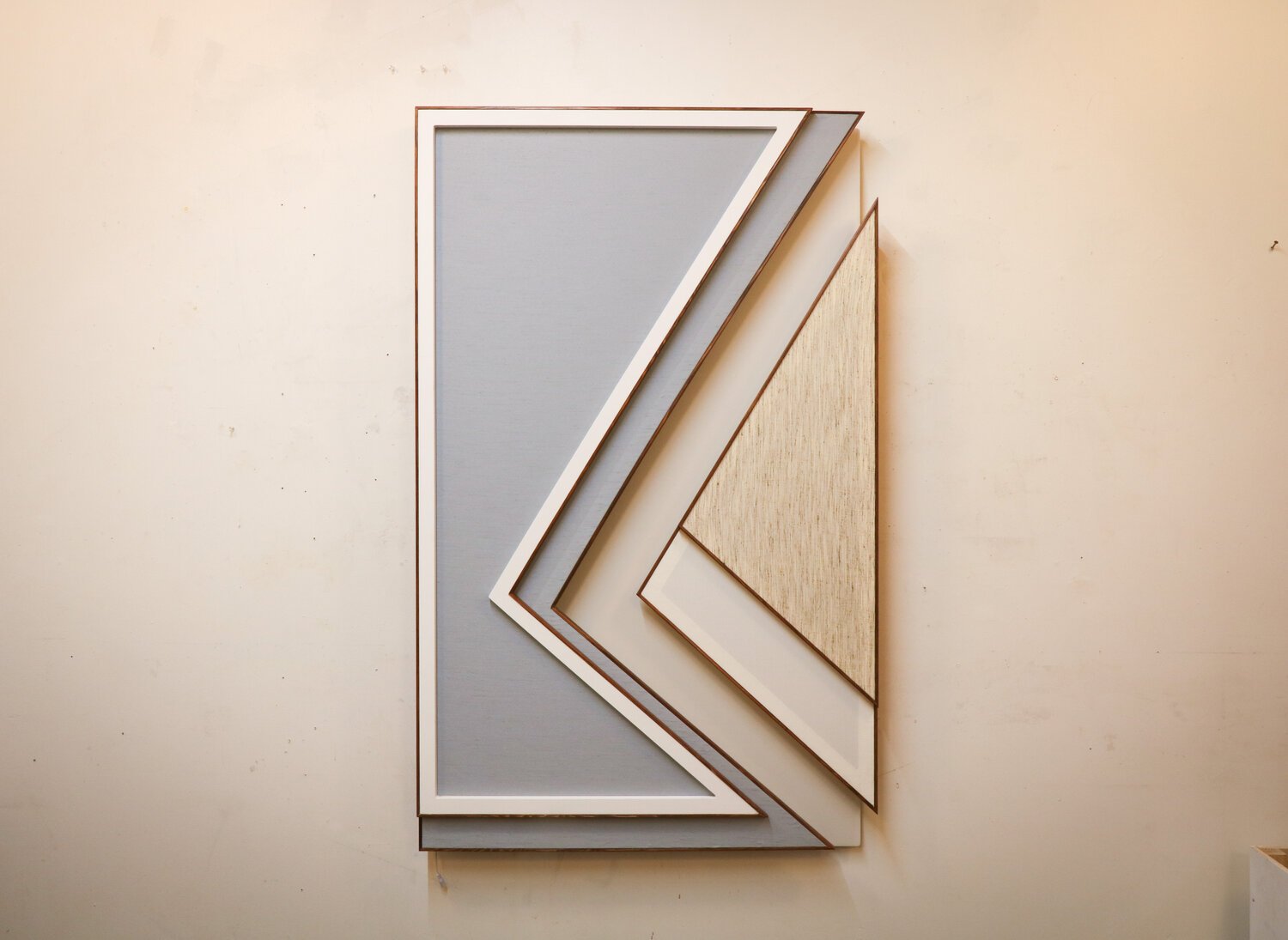Continuum
So there we were,
Talking shit about art,
Outside the coffee shop again,
Everything Is meaningless
She said.
The idea for this show started as an opportunity to wrap up several projects I've been working on for the last decade or so. Like, a final farewell, or due diligence, or a big middle finger to the things that have been haunting me for a while now.
And of course the rub is, when you cycle back to those things you wanted, that you aspired to, or felt you needed to be, you find that they suit you differently. That their meaning has changed. Your job you worked so hard for isn't what you thought it would be like, your relationship means more to you than you thought it could have, you're not as strong as you thought you were.
So I offer up these six pieces that I’ve imagined at different times, when I was different people. And with them the origins of their significance and also how that has shifted over time. In doing so it occurs to me that meaning, like so many other things, is fluid - that it's ours to locate, ever-changing.
Wishing you the best in your search,
Peter Rand xo
Boat
1. It is said that over 500 years ago the Spanish Conquistador Hernan Cortés fled Cuba with 11 ships and 500 men to conquer the Aztecs in Mexico. Wanting his men to realize that they had no opportunity to retreat, he burnt their boats so they had no choice but to succeed/ win/ whatever. On the whole historians believe this legend to be largely false. While Cortés did in fact most likely incapacitate his ships, greatly diminishing the possibility of retreat or mutiny, it unlikely involved burning. Still, scores of gurus and purveyors of self help anecdotes alike use this story as a sort of proof:
Every person who wins in any undertaking must be willing to burn his ships and cut all sources of retreat. -unstoppablefamily.com
2. I’ll admit it, my own boat burning endeavor began with the notion of starting anew, laying waste to the residue of my past blah, blah, blah. But then, whilst watching “Waterworld”, the cinematic gem starring Kevin Costner, a new interpretation emerged: In the movie Waterworld, the man in the flying machine is only able to find Kevin Costner and the damsel in his care because the antagonists, the “Smokers”, shepherded by a one-eyed Dennis Hopper, have burned his boat sending a plume of signaling smoke up into the air. “I'm so glad you burned your boat otherwise I would've never found you!” the man in the flying machine says. And so it seems that burning your boat is also about staying where you are and letting the help you need come to you. So according to Kevin, let go of your past, but stay where you are, dont future trip.
3. Perhaps most importantly though, and what gets missed in both these interpretations, is the inherent and profound loss that occurs in burning one's boat - The fact that there is no way back to that person you once were really sucks sometimes. The fact that there is no guarantee that things will get easier from here as you bob in the water amongst smoldering debris is really scary. Forget heroism, that shit is hard.
And so many of the rocks around the boat, sandblasted by Lucy Mae VanZanden, are imprinted with interlocking circles. A reminder to myself that the process of transformation is this weird combination of going forward, being present, and letting go. Feel free to take one with you when you leave, and if you find yourself in that dark water, know there’s lots of us trying to hang in there too.
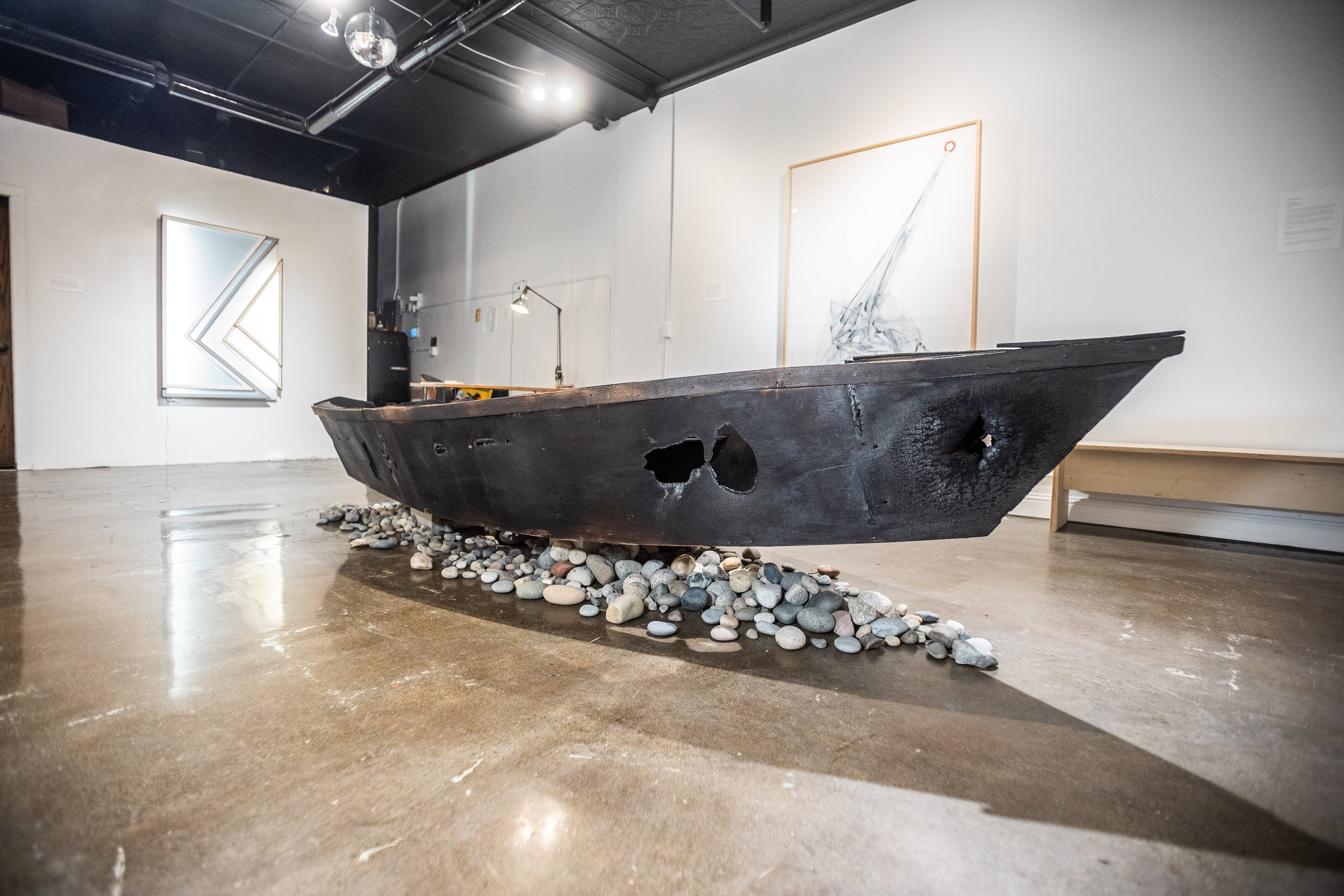

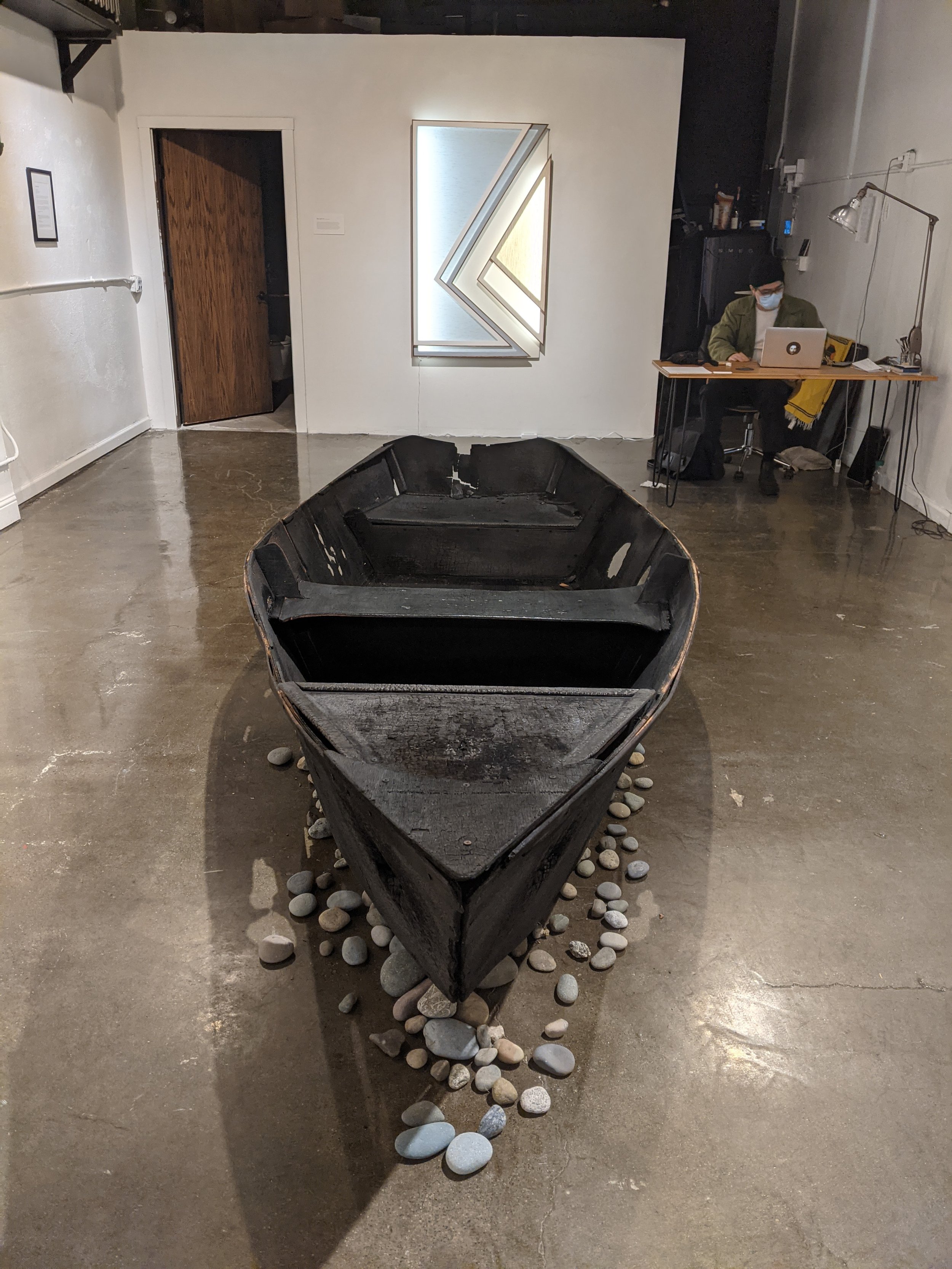
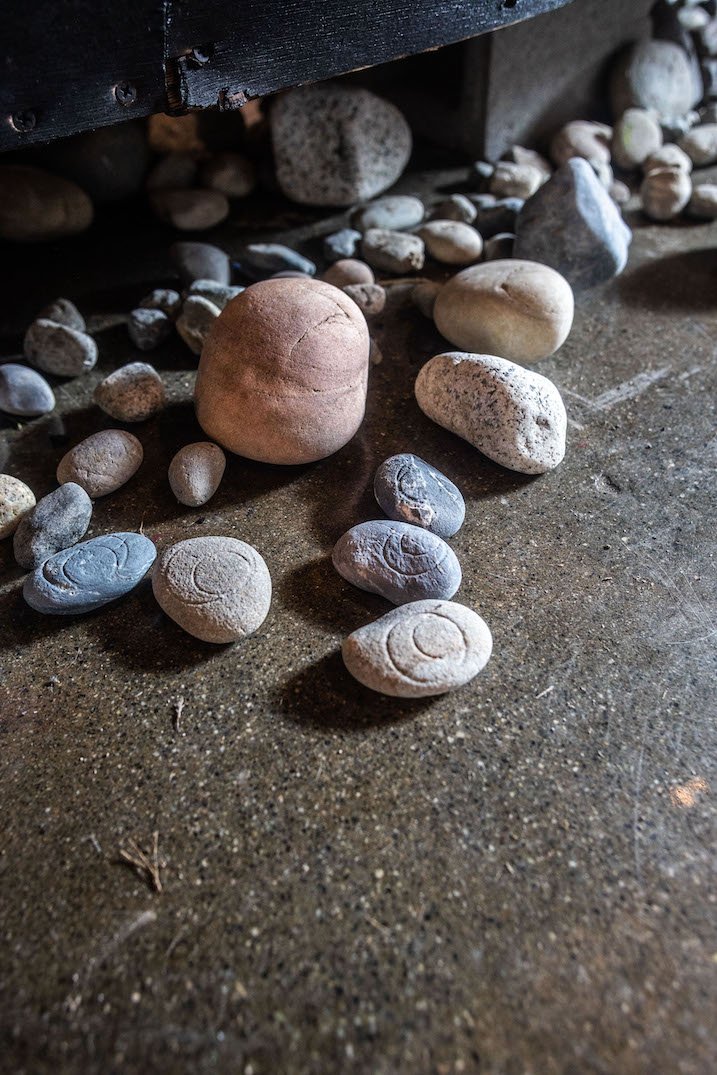
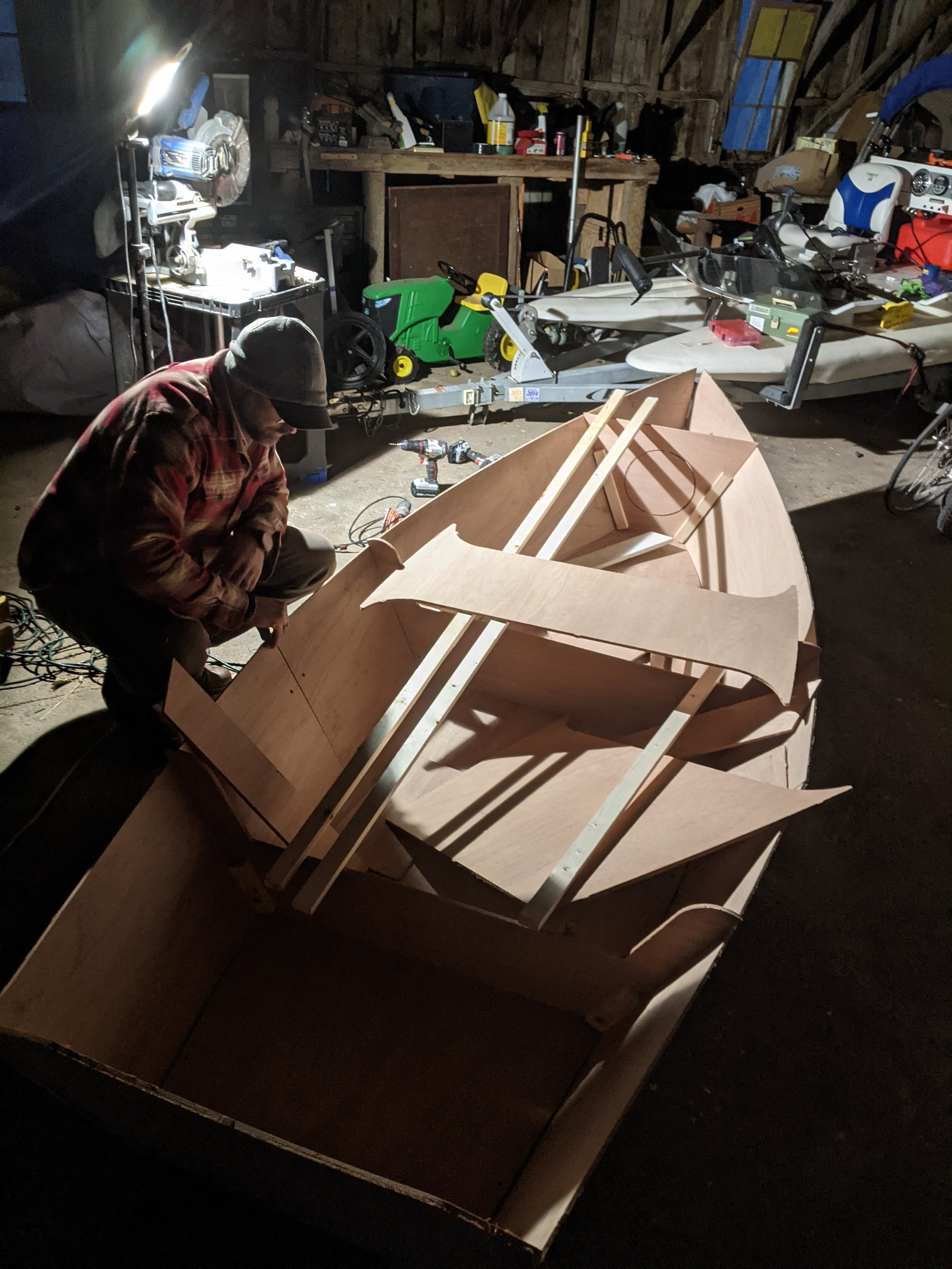
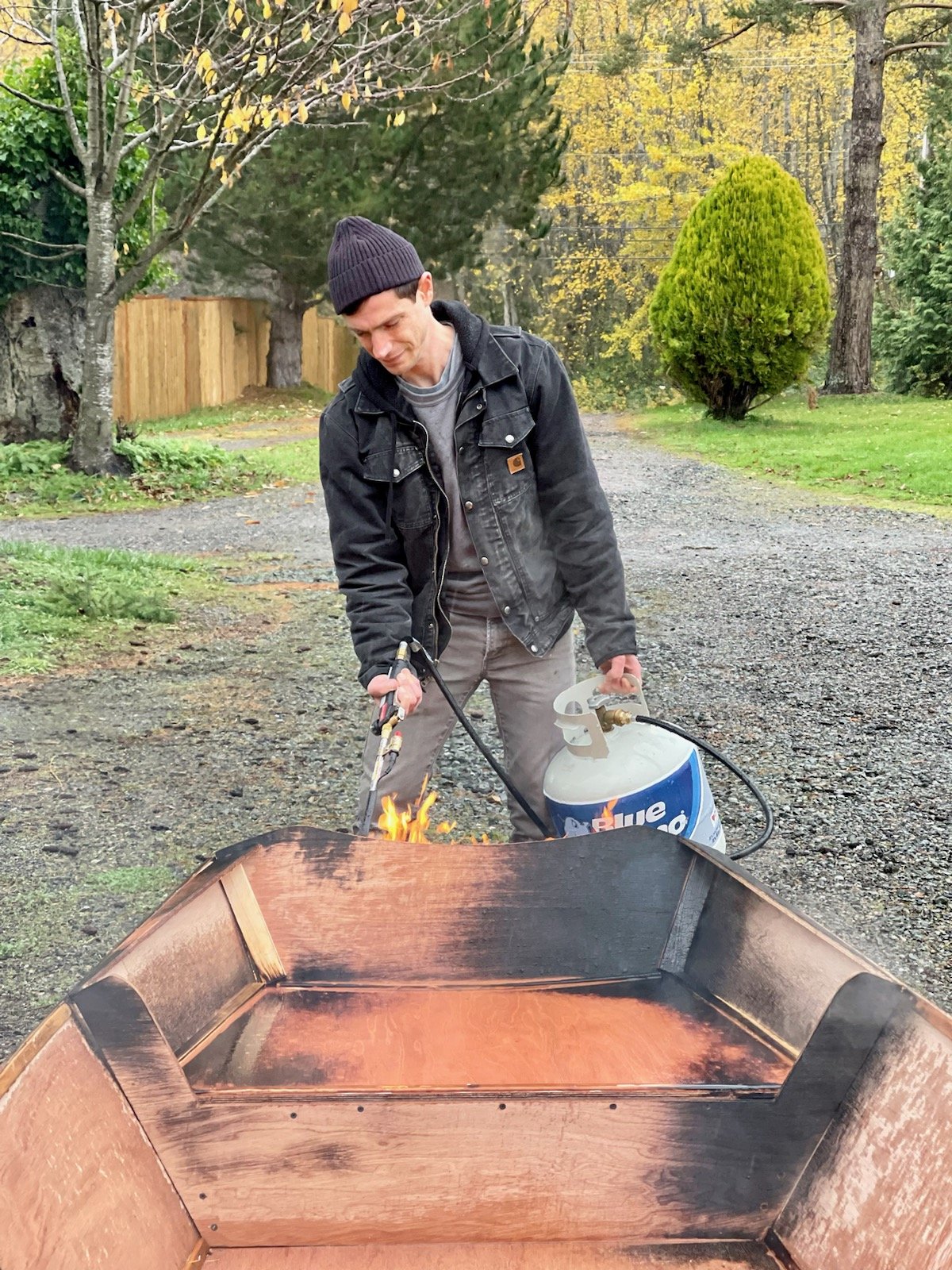



Swim
For years I’ve been working on a project called A to B wherein I traverse a distance standing on makeshift platforms - disassembling them and reassembling them in front of me as a way to move forward. Photos are taken at intervals and the final work is a collage of all the instances stitched together - a timelapse of getting from here to there. A to B has been my meditation on the incredible resilience of humans as they push forward, building and creating their lives at every moment in the face of the tragic and absurd. But it always seemed weird to have them be linear - like, moving from one side to the other... Journeys seem more messy, more cyclical. And so for a while I’ve been trying to figure out how to make them look like storms; a storm of bodies and movement that rises and falls - that seems closer to how it goes.
Not sure this one is a storm really but I like being able to see the different types of swimming indicated by the splashes in the water - the frequency of splashes diminishing as I move inward and get tired. Few are able to finish strong I suppose.
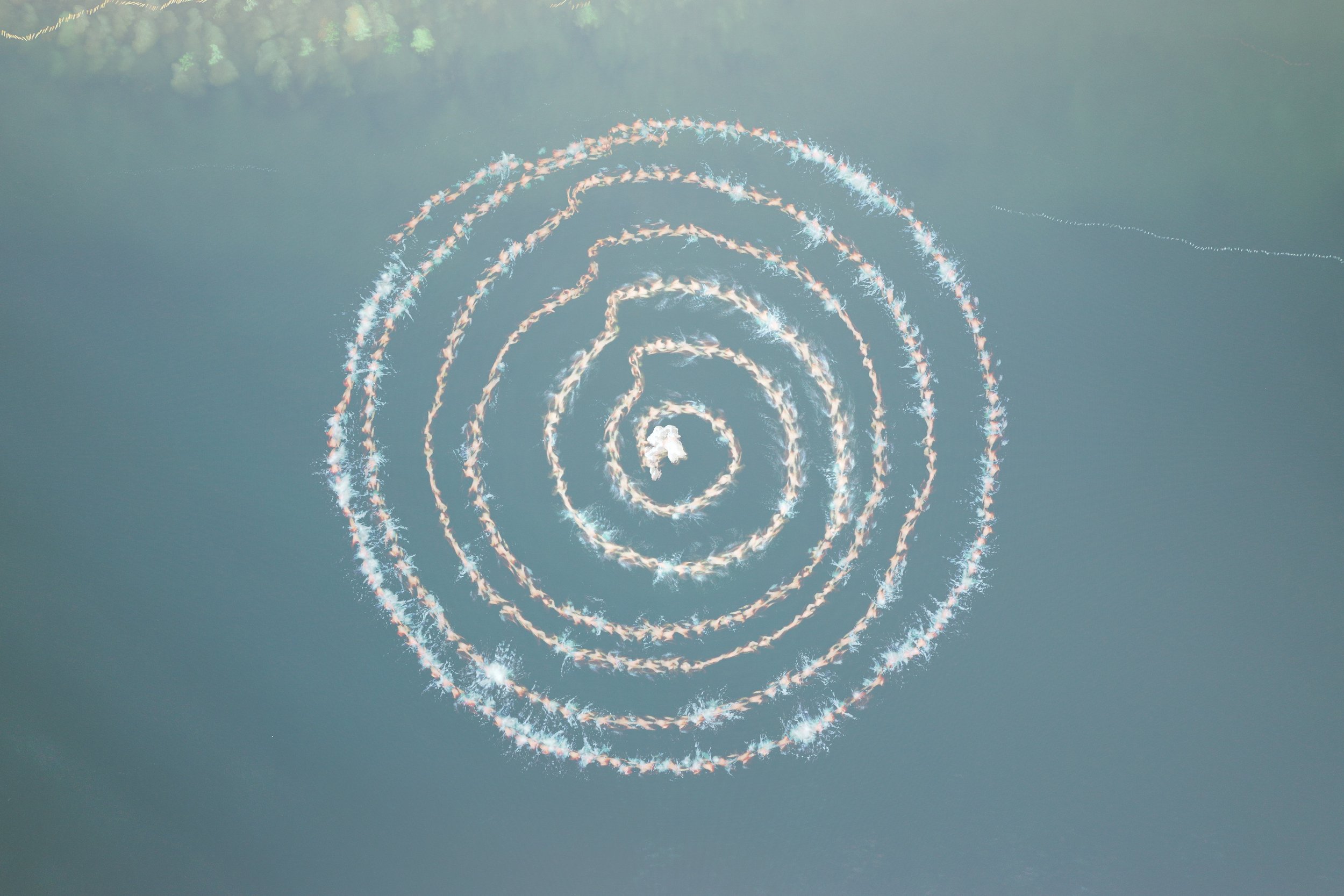
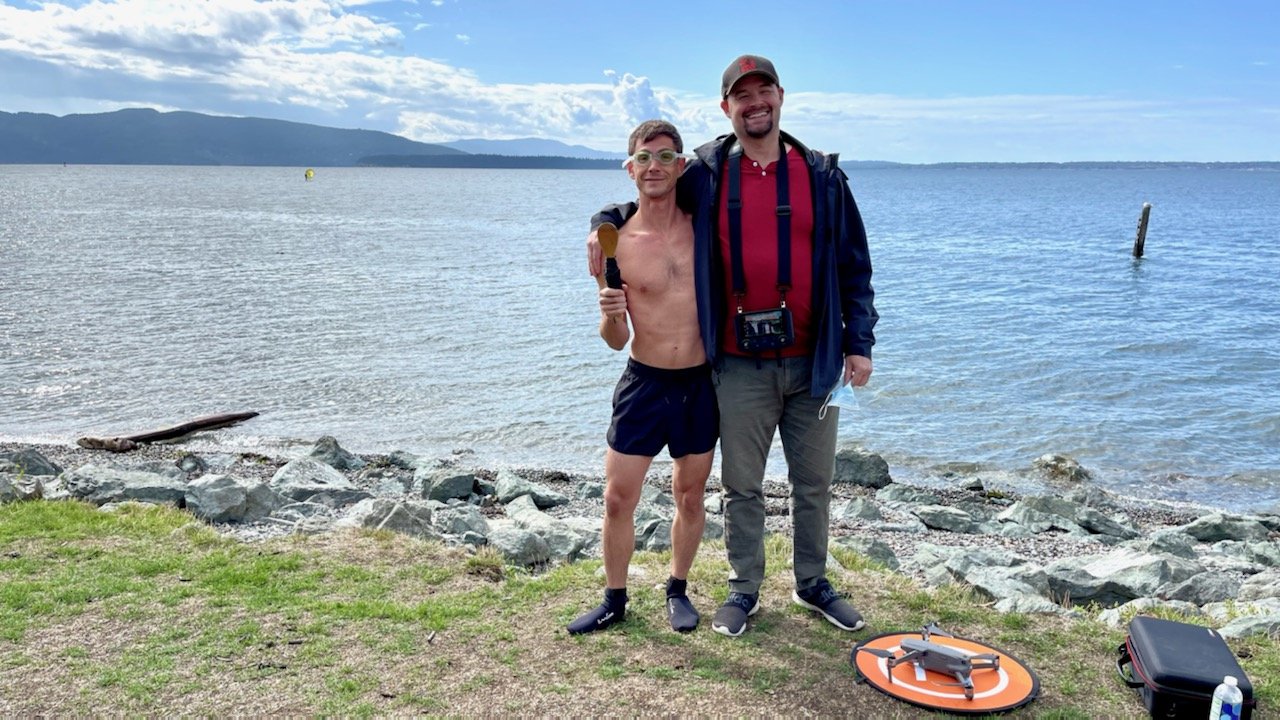
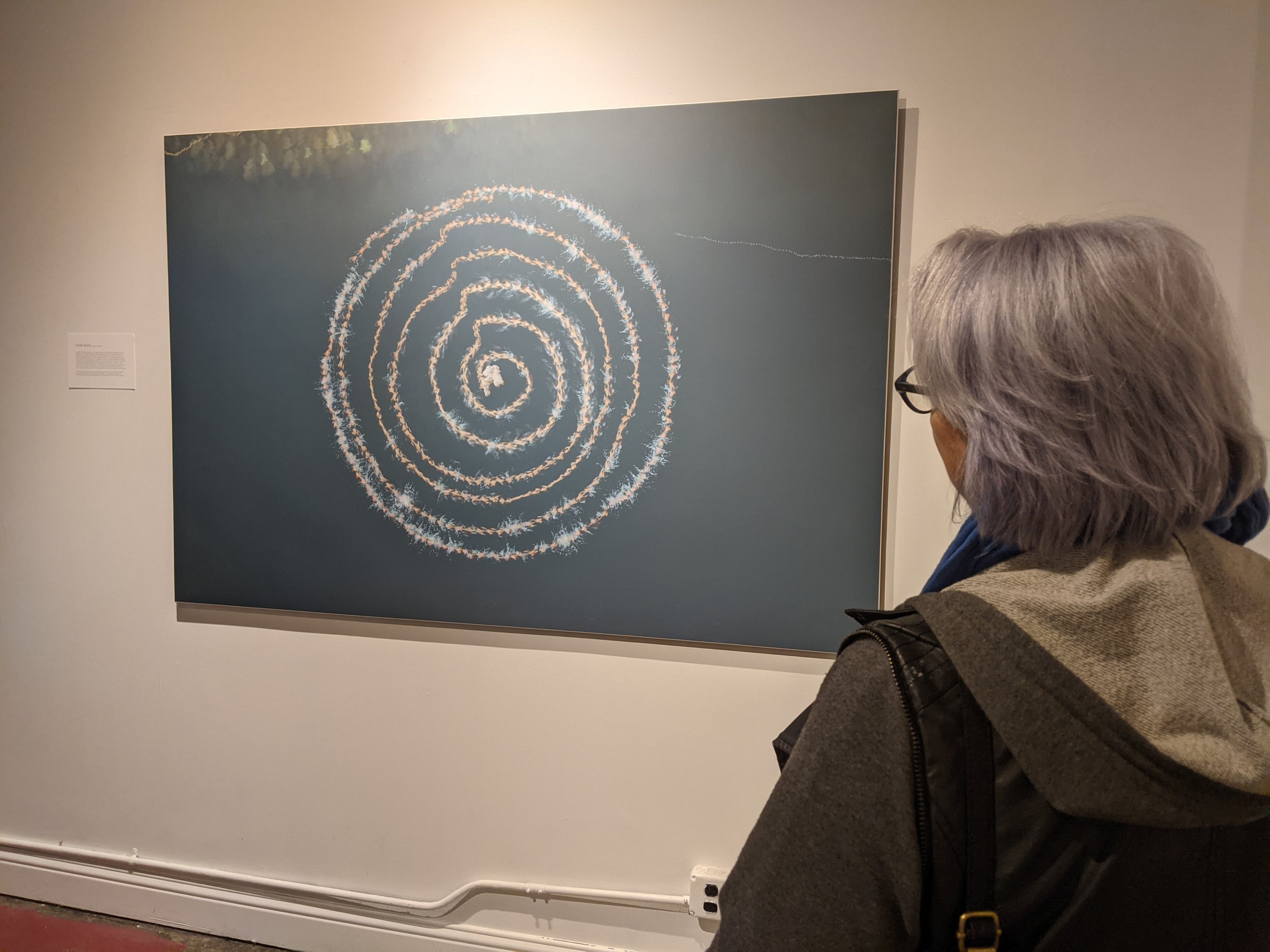

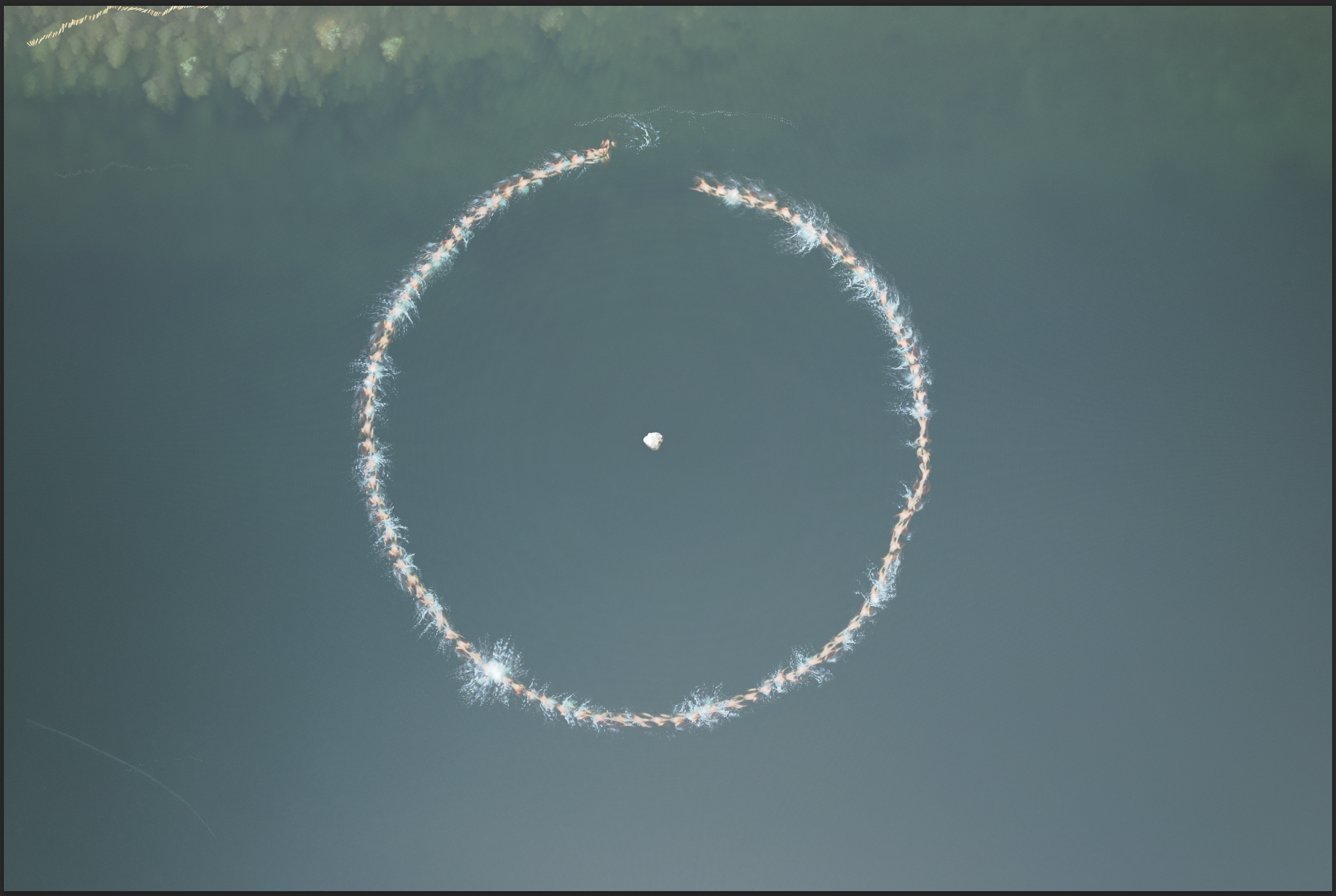
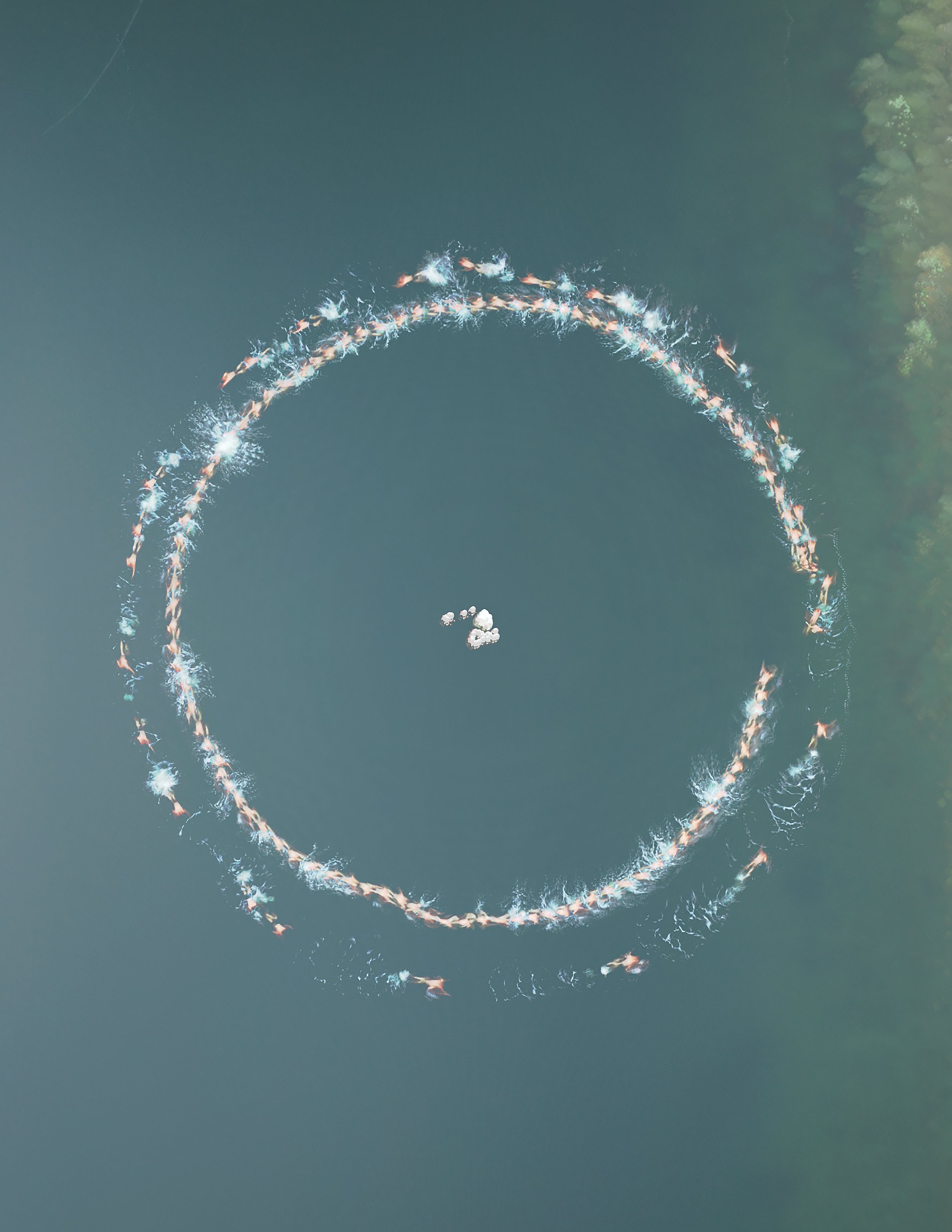
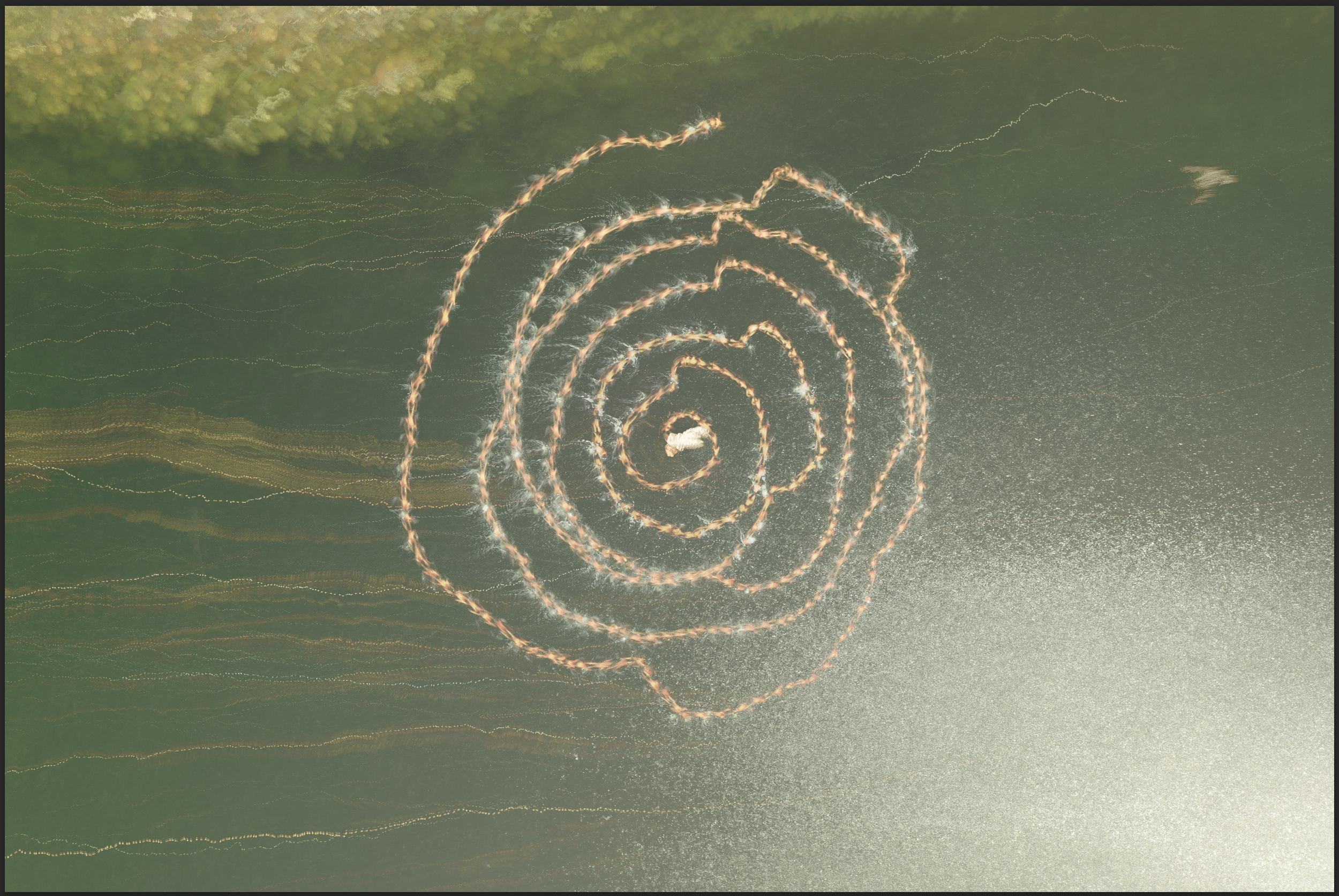
BlowUp
This is technically part of a series within a larger body of work called the Limitations Project. This is what I wrote about this series of the limitations project 10 years ago:
In the Limitations Project, certain embedded constraints of the natural world are communicated through technological and computational processes. The visualizations generated by custom software and inspired by organic systems, are returned back to the material from which they originated, creating a single artifact that references a process interpreted by the organic and technological simultaneously. In this case a modified branching algorithm is rendered in wood through CNC machining. The routed design is then filled with black powder and ignited.
The previous iterations look far more like trees, but the algorithm used to design this composition is essentially still that original program. This one however was the first one where I attempted to capture the explosion from the top. The canvas on the left covered the explosion that occurred within the wood panel to the right.
The Limitations Project is really about pointing out how what we perceive as limitations of a material or organism can be the same things that are responsible for its attractiveness and beauty. Part of the reason trees branch is because the wood becomes incapable of sustaining its own mass, and so it branches as a way to distribute that weight - the beautiful form a tree takes is in part due to the fact that its physicality can’t sustain what it becomes. The explosion and subsequent darkening of the line is meant to exploit another limitation of the material; namely its inability to withstand heat. And so in this case, I think about the canvas being somehow marred or imprinted with that exploitation. I think about trauma and resilience, its event and aftermath.
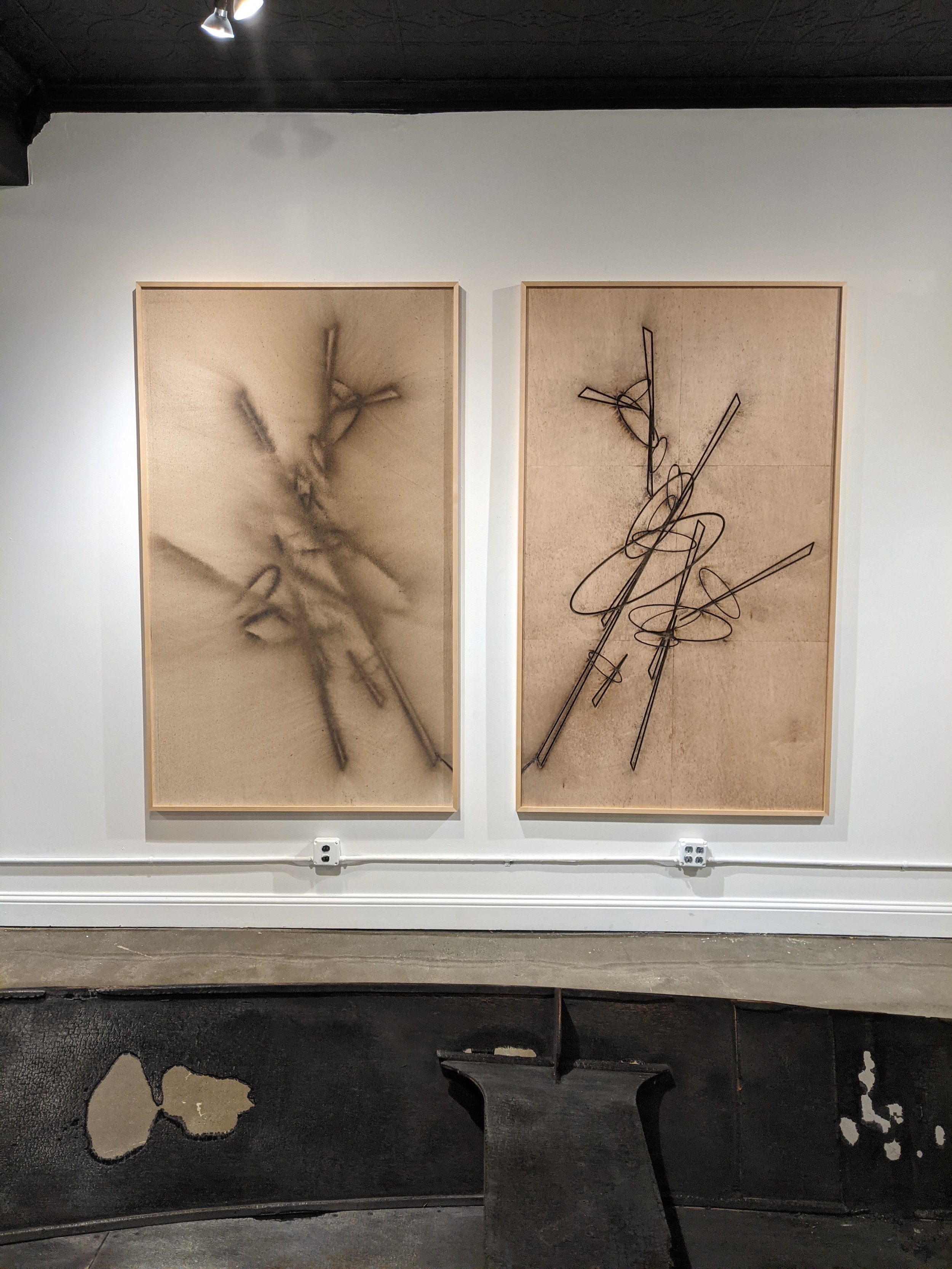



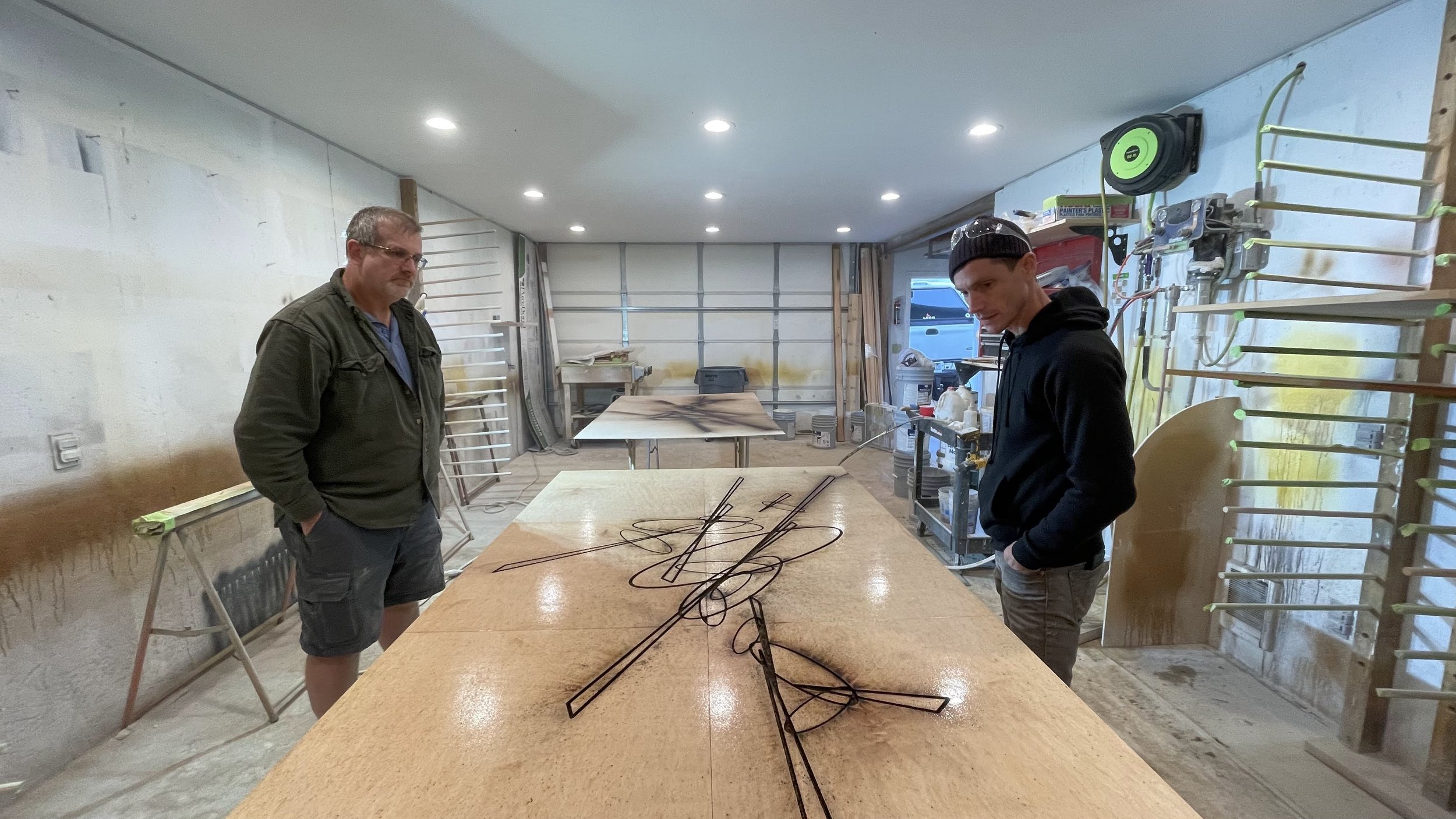
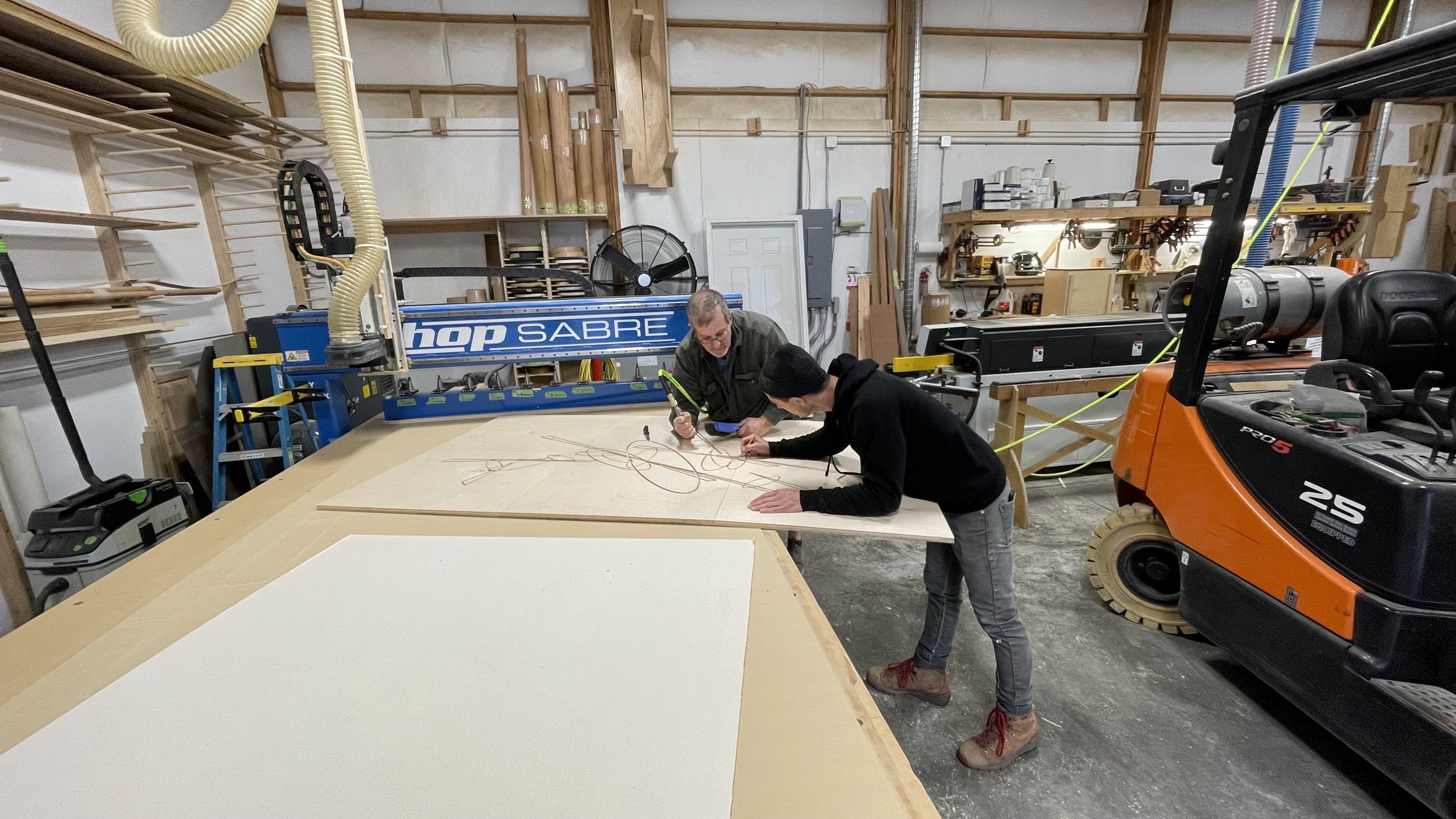
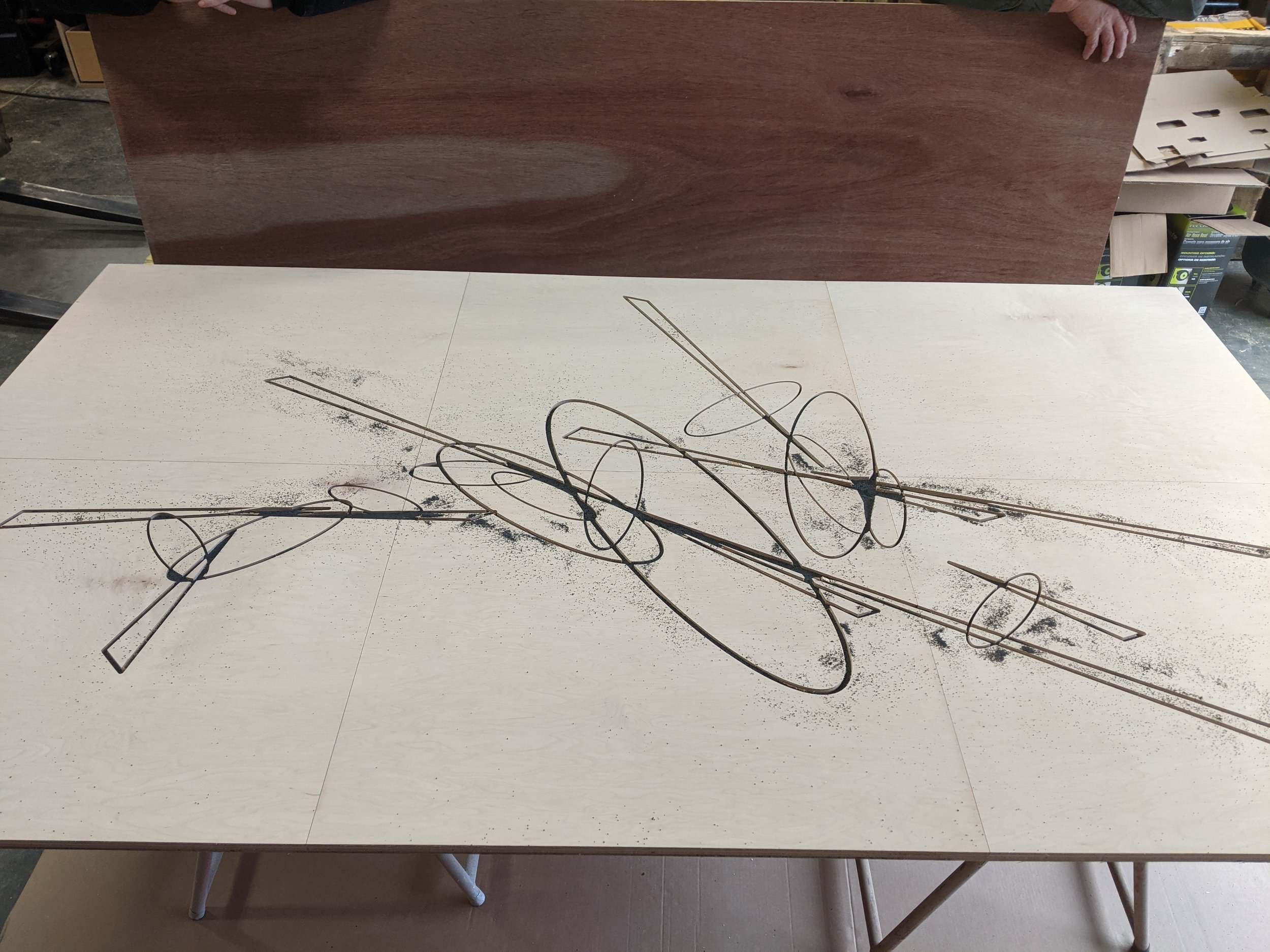
Prints
I bought a small printing press in hopes of dredging up some new inspiration by way of being confronted with a new, entirely foreign medium. Very quickly I realized that those who are proficient printmakers are usually good illustrators and meticulous in their work habits. I am neither of these things. Instead I etched a messy circle into a copper plate over and over again, pulling prints at intervals. Eventually working through the copper material, I started to fold back the released interior of the circle. More than anything else in the show this one reflects this “Continuum” idea…. But I love how the two poles are really the same in a way, each with the white interior - Like that T.S. Elliot line: Arriving back to the place where you started, seeing it again for the first time… or something like that.
Anyways, It wasn't until after I was done I realized I had basically made an eclipse, and just so you know Dec. 4th, the day after this show opens, is my birthday and also the final eclipse of 2021 and all the astrologers are totally freaking out about it - the eclipse, not my birthday. I don't know any astrologers.

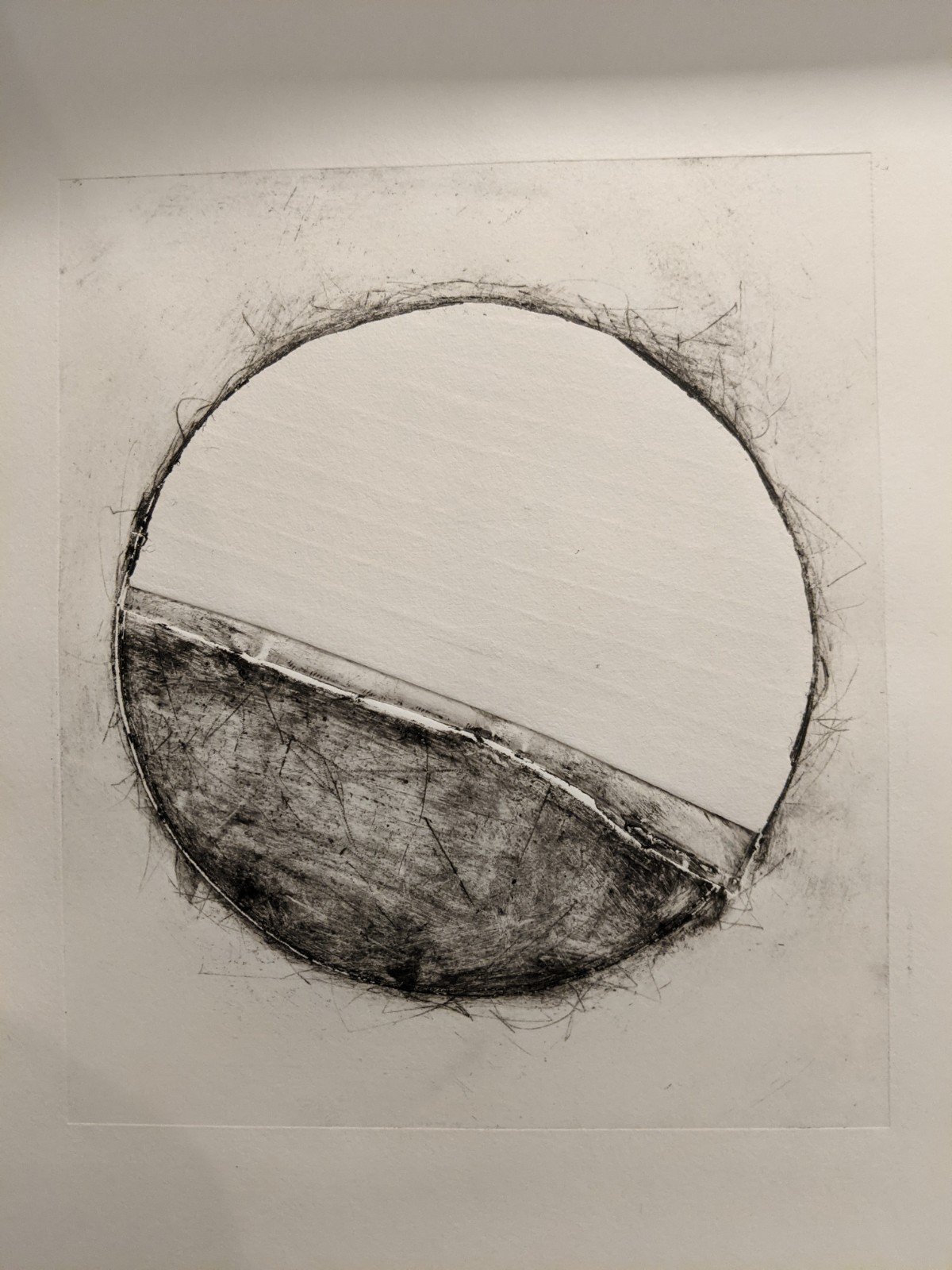
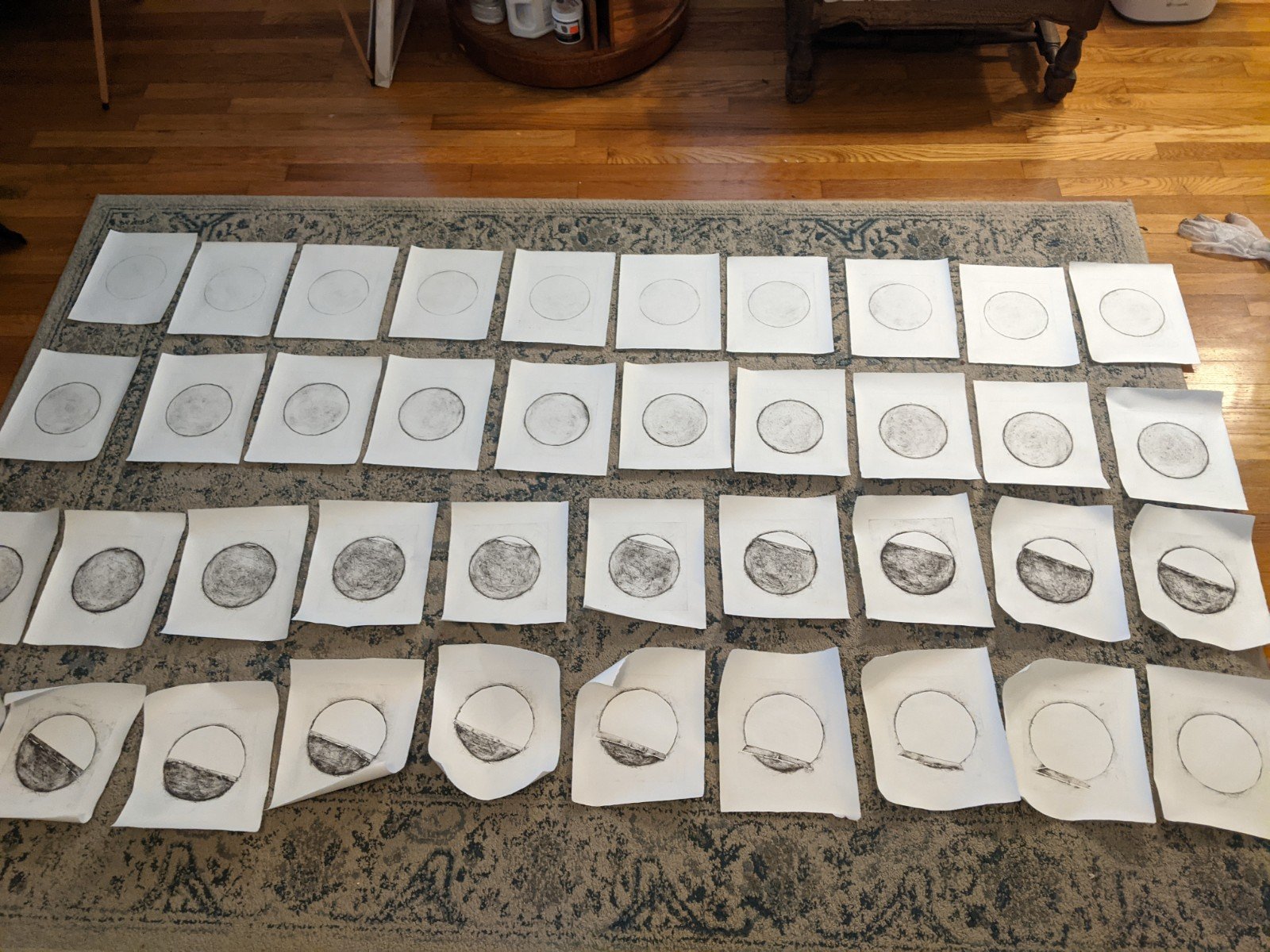



Watercolor
The line work for this piece and its smaller predecessor is generated by custom software and then laser etched into watercolor paper. With regards to the software, essentially I name the big circle and small circle within the composition and then input however many additional “nodes” should be created within the composition (in this case 5). After running the program, all entities are connected with lines that behave according to certain attributes that are also defined.
I make mostly abstract work but am almost always thinking about people. And so this composition and others generated from the same software make me think of a discussion, or argument between two people - each one projecting ideas that collide with the others - a big sort of clusterfuck in the center.
Anyways, having just recently had the privilege of meeting exceptionally talented pigment artist and researcher Heidi Gustfason, I thought it would be cool to pick her brain about some different materials other than over the counter watercolor to finish this one with. And so for the red color I needed, she selected a 500 million year old hematite (iron ore) from Iran, and for the blue, an iron phosphate or “vivianite” reclaimed from the industrial waste of an automotive plant in Taiwan. Ta da.


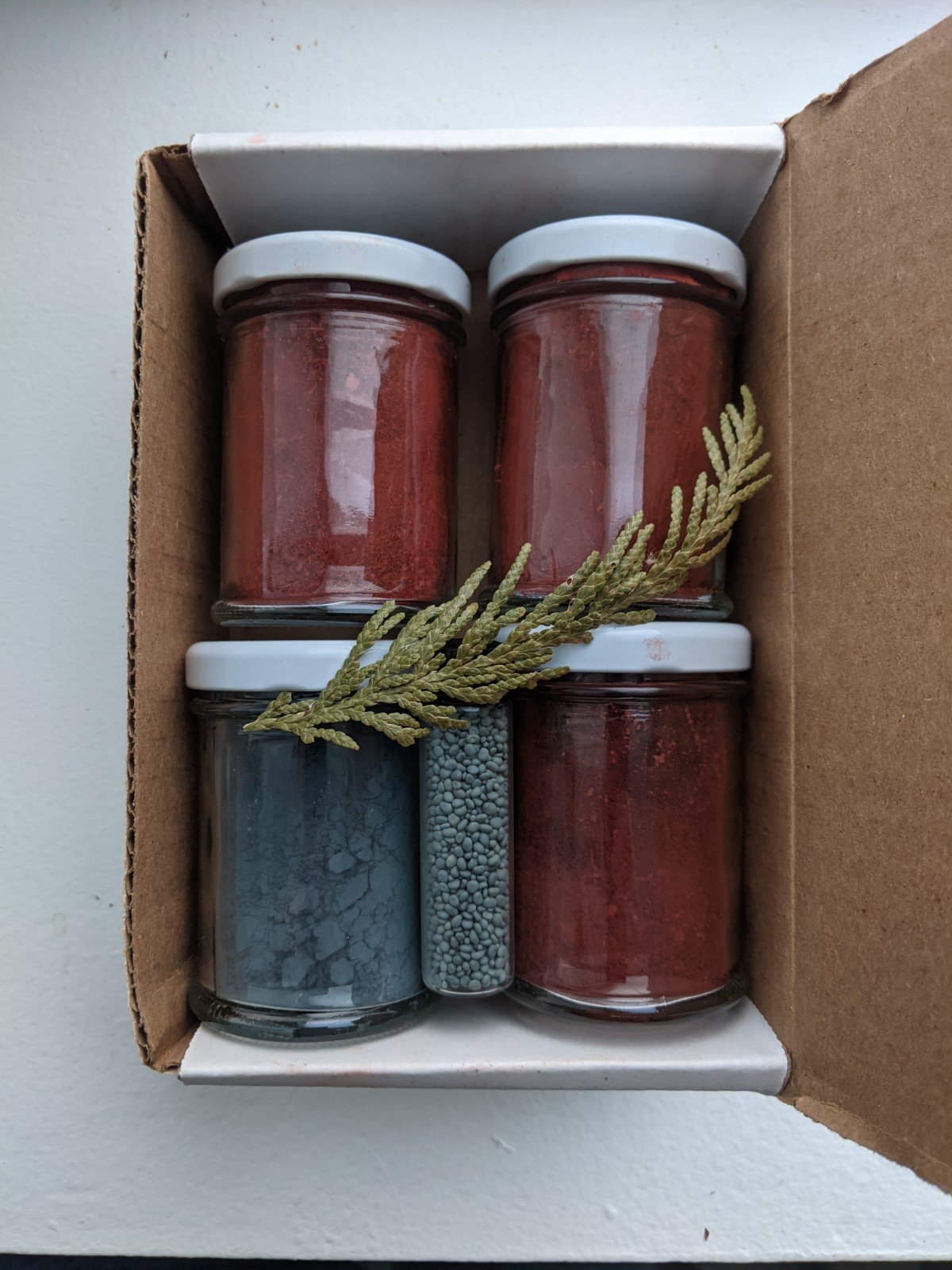
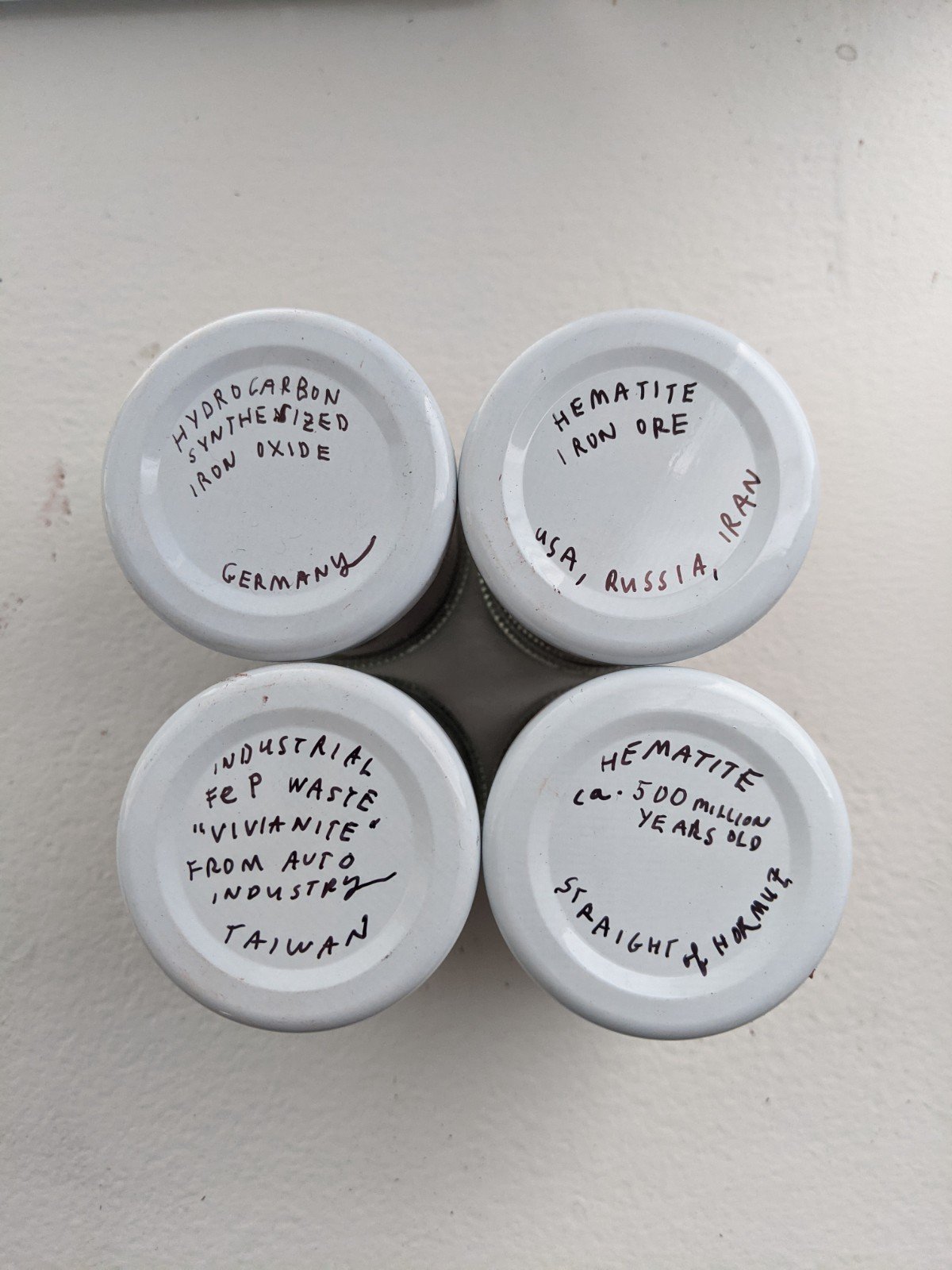

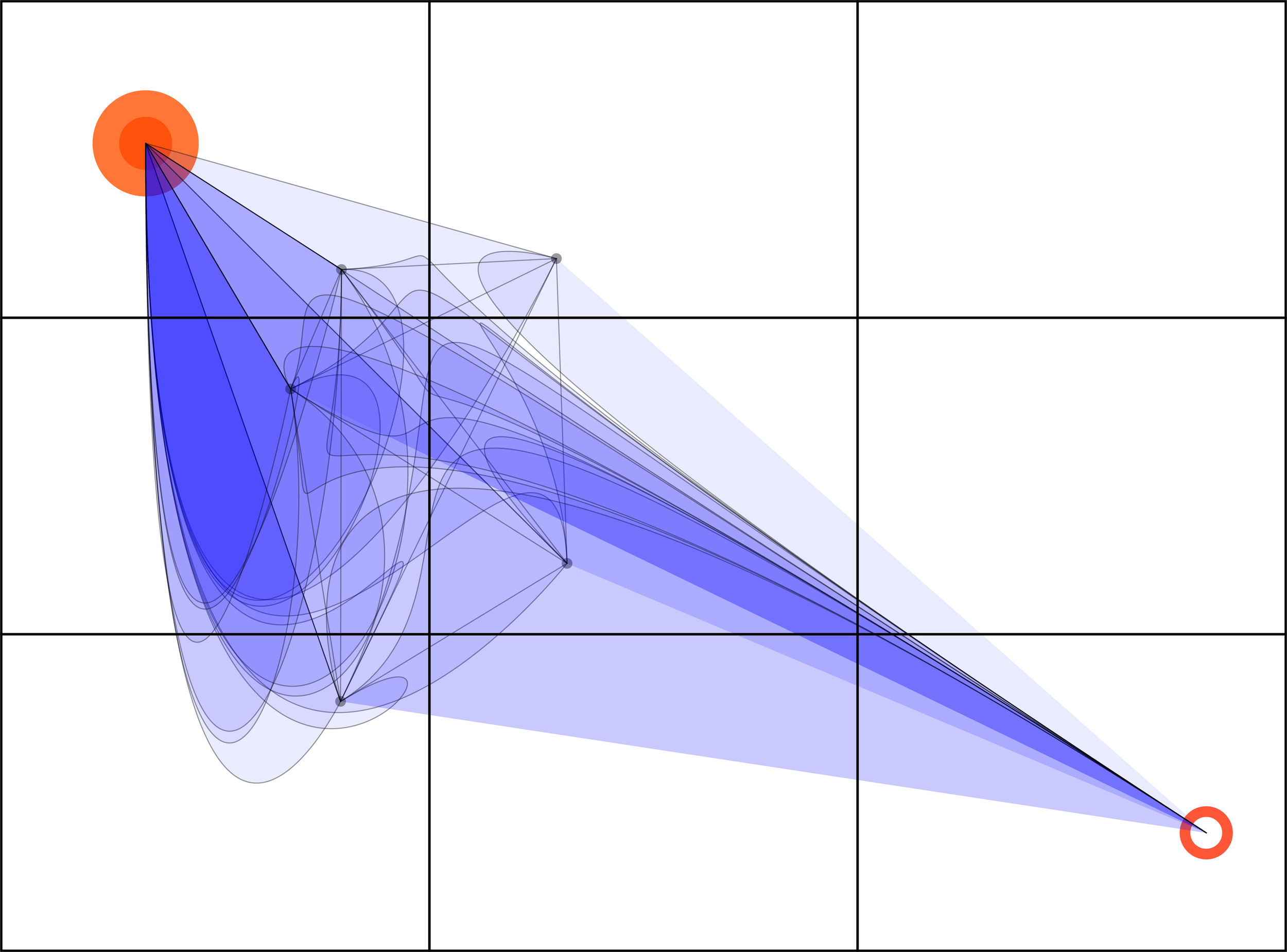
Light
I spent about 4 years worth of savings designing and manufacturing a custom aluminum extrusion that houses LED strip lighting and also acts as an armature for aestheticized covers. So far, this is one of 2 lights that has implemented it - a final proof of concept for a ridiculous and unfortunate amount of work. Apparently there's less of a market for custom aluminum extrusions that house LED strip lighting that also act as armatures for aestheticized covers than I had anticipated. Anyways, it's been hanging in Sylvia Center since that first lockdown happened like 2 years ago, and illuminated for most of that time too. I like that it's sort of presiding over this new installation having weathered the lockdown with the rest of us.

